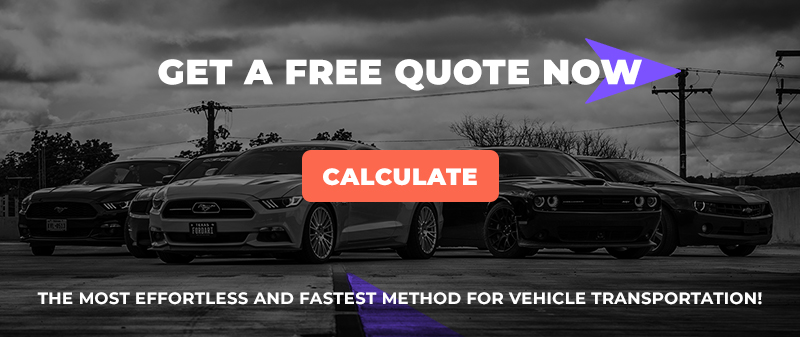
Shipping a car across state lines can be a daunting task, especially when considering the various transport options available. For those looking to ship a vehicle from Texas to California, understanding the differences between open and enclosed car carriers is crucial. Open carriers are often more cost-effective and widely used, accommodating multiple vehicles at once. However, they expose cars to environmental elements during transit, which may not be ideal for high-value or classic cars. This article will delve into these two shipping methods, comparing their costs, safety features, and overall suitability for different types of vehicles.
Summary
Understanding Car Shipping Options
Open Car Carriers
Open car carriers are the most common method for transporting vehicles across long distances. They typically consist of a flatbed truck that can carry multiple cars at once, making them a cost-effective option for many customers. One of the primary benefits of using an open carrier is the lower price point compared to enclosed carriers. According to industry statistics, shipping a vehicle via an open carrier can save customers anywhere from 20% to 50% compared to enclosed transport.However, while open carriers are economical, they do come with certain drawbacks. Vehicles transported in this manner are exposed to the elements, including rain, wind, and road debris. This exposure can lead to potential damage, especially for cars that are sensitive to environmental factors or those that have custom paint jobs. For instance, a car shipped in an open carrier might arrive with dirt or minor scratches due to exposure during transit.
Enclosed Car Carriers
Enclosed carriers provide a more protective environment for vehicles during transport. These carriers are fully enclosed trailers that safeguard cars from weather conditions and road hazards. This option is particularly popular among owners of luxury vehicles, classic cars, and motorcycles who want to ensure their investment is well-protected during transit.The primary advantage of using an enclosed carrier is the enhanced protection it offers. Vehicles are shielded from rain, snow, UV rays, and other potential threats. However, this added protection comes at a higher cost, often ranging from 30% to 60% more than open transport options. Enclosed carriers also have limited capacity compared to open carriers, which can lead to longer wait times for pickup and delivery.
Cost Comparison: Open vs. Enclosed Carriers
Pricing Factors
When it comes to shipping a car from Texas to California, understanding the pricing factors associated with open and enclosed carriers is essential for budgeting your transport. Several variables influence the overall cost of car shipping, including:
- Distance: The longer the distance, the higher the shipping cost. Since Texas and California are separated by over 1,000 miles, this will significantly impact pricing.
- Vehicle Size and Weight: Larger and heavier vehicles typically incur higher shipping fees due to increased fuel consumption and space requirements on the carrier.
- Seasonality: Shipping costs can fluctuate based on demand. For instance, summer months often see a spike in demand for car shipping services, leading to higher prices.
- Pickup and Delivery Locations: Urban areas may have more transport options available, potentially lowering costs compared to rural locations where fewer carriers operate.
- Condition of the Vehicle: Non-running vehicles may require special handling or equipment, which can increase shipping costs.
Average Costs
According to recent industry data, the average cost to ship a standard sedan from Texas to California using an open car carrier ranges from $800 to $1,200. In contrast, enclosed car carriers typically charge between $1,200 and $2,000 for the same route. This price difference reflects the added protection and specialized service enclosed carriers provide.For example, a customer shipping a luxury SUV from Dallas to Los Angeles might expect to pay around $1,000 using an open carrier but could face costs upwards of $1,600 with an enclosed option. This significant difference emphasizes the need for customers to weigh their priorities—whether they prioritize budget or vehicle protection—when selecting a shipping method.
Safety and Protection during Transport
Risk Assessment
When deciding between open and enclosed car carriers, evaluating the risks associated with each transport method is crucial for ensuring your vehicle’s safety. Open carriers, while cost-effective, expose vehicles to various environmental hazards. These include:
- Weather Conditions: Rain, snow, hail, and intense sunlight can all affect the condition of a vehicle during transit. For instance, UV rays can fade paint over time, while rain can lead to rust if water seeps into vulnerable areas.
- Road Debris: Cars transported on open carriers are susceptible to damage from flying debris, such as rocks or gravel, especially on highways. This risk is particularly concerning for high-value or classic cars that require meticulous care.
On the other hand, enclosed carriers significantly mitigate these risks. Vehicles are shielded from the elements and road debris, providing a safer environment during transport. However, it’s important to note that while enclosed carriers offer better protection, they are not entirely risk-free. Incidents can still occur, such as accidents during loading or unloading.
Insurance Coverage
Insurance coverage is another critical aspect to consider when shipping your car. Most reputable transport companies provide insurance options to protect your vehicle during transit. However, the level of coverage can vary significantly between open and enclosed carriers.
- Open Car Carriers: Typically offer basic liability coverage, which may not fully cover the total value of your car in case of damage. It’s advisable to check with your shipping company about their insurance policy and consider purchasing additional coverage if necessary.
- Enclosed Car Carriers: Generally provide more comprehensive insurance options due to the higher value of the vehicles being transported. Many enclosed transport services include higher liability limits and may cover damages more extensively.
